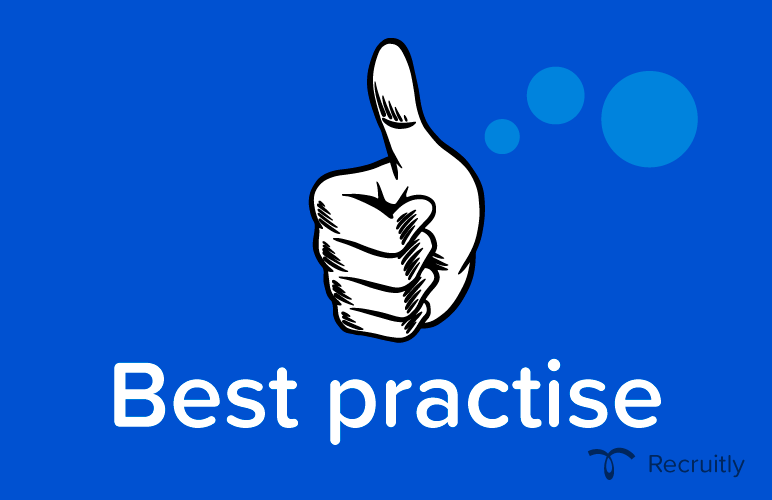Smooth Recruiting Life cycle. The 4 words every recruiter loves to hear. But how do you ensure that all of your candidates are happy with your recruiting process? Ever since the Great Resignation has began, I felt like this topic should be covered in-depth covering all the things that a candidate does and does not find ideal.
Here are the 9 best practices you can do to ensure candidate happiness –
Thank them for applying for the role – If you are getting a lot of applications for the role that you have posted, it means that they are willing to work for your company. The least you could do is to thank them for spending their time filling out their details and answering certain questions you might have asked on the website.
Try to keep the first round informal and friendly – The first round of an interview is to usually get a glimpse of what they are. The first round is to check their communication skills, learn more about their past work experience and more, and not try to bombard them with aptitude tests.
Talk about the company culture – Whether you are a recruiting agency or an HR, it is probably not a bad idea to talk to them about the company and what can the candidate expect from the company. When candidates are about to join a company, they do not have an understanding of how the company works and it can take months to adapt to the company’s culture. Talking to them about the basic culture of a company can work wonders. Is the company a pet-friendly company? Tell them. Do they have a 4-day working week for 10 hours a day? Let them know. This is the least that you could do to avoid getting the wrong candidate and, again, save a lot of time for both – you and the candidate.
Setting expectations – In the first round, you can set expectations of what you are looking for in a candidate and what might the next rounds of interviews bring to the table. Whether that be the aptitude test, a scenario-based test, etc. But remember, setting expectations works both ways. Try to ask them if they are expecting something from the role or the next rounds to avoid wasting any time for you as well as the candidate.
Give them a choice to schedule interviews – A lot of companies have adapted to this model of letting the candidate schedule a meeting according to the available slots due to popular scheduling apps like Calendly, which is already integrated with Recruitly, and many other CRM products. This might sound as if it is the industry norm but personally speaking, I wasn’t given any choice about the date and the time of the interview and I had to go through 5 (FIVE!) rounds of interviews in 4 hours. By the end of the 4th round, I was mentally exhausted and couldn’t do more. But I had to carry on, anyway. This perfectly leads me to the next practice –
Fewer rounds = Better for everyone – While some might argue this point, I completely vouch for it since fewer rounds can lead to – a higher number of job applications, less stress for the candidate, less time taken to place a candidate, and much, much more. Another personal story, but my interview process at Recruitly (we are hiring, btw!) was just two rounds.
Try to keep them in the loop – This has happened with all candidates, they do not get timely updates about the role they have applied for, and then the HR/ Recruiting agencies take months to tell them that they were not selected. The best thing that you can do is keep them in the loop about what is happening by following up with them. Since following up with 100 candidates can be challenging, cloud-based software can help automate basic, repetitive tasks for us. You can send them an automated email at every stage of the recruiting process to keep them in the loop.
Introduce them to the team – If they are selected, make sure that you introduce them to their direct team and if possible, everyone else as it will make the candidate feel more welcomed and a part of something special.
Human touch – If you are rejecting a candidate, make sure that you have a meeting/ a call with them to discuss why you did not think they are a good fit, what they can do to improve their skills (constructive feedback) and if possible, refer them to a different company that you think might like them more. If you cannot get on a call/ a meeting, the least that you could do is send them an email about all the above things. Trust me, no candidate likes a generic reply from a “no-reply” email address, and a human touch might help you go a long way.
Conclusion
Implementing the points above can lead to a much better candidate experience which will help you build your brand, increase your reputation and goodwill even among the candidates that were rejected, and ensure a smooth recruiting life cycle.









